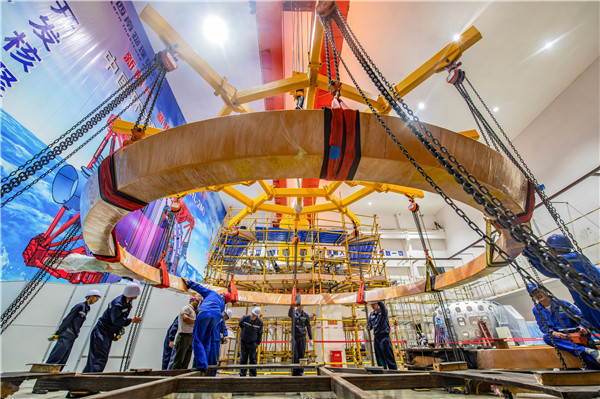Southwestern Institute of Physics

Southwestern Institute of Physics project [Photo by CNNC]
Affiliated with China National Nuclear Corporation, the Southwestern Institute of Physics (SWIP) was established in 1965, and was China's first nuclear fusion research institute. SWIP has been the core of China's 3-step national strategy of nuclear energy development (thermal reactor, fast reactor, and fusion reactor). It aims at realizing the peaceful use of fusion energy. It has a complete range of disciplines, research platforms and laboratories for fusion energy development. SWIP has also been an important contributor for Chinese participation in ITER construction, by providing key technologies and components for ITER. So far SWIP has won over 20 Chinese National Scientific and Technological Progress Awards. It is the first institute to win the first prize of the Chinese National Scientific and Technological Progress Awards in the field of magnetic confinement fusion.
Over the past 50 years, SWIP has built more than 20 experimental devices for controlled nuclear fusion research. SWIP designed and constructed two medium-sized tokamaks in 1984 and 1994 (HL-1 and HL-1M), of which HL-1 was the first mega-science project of magnetic fusion in China. The success of HL-1 greatly helped China to develop rich experiences in design, construction and operation of large fusion research facilities. In 2002, SWIP constructed the first tokamak with divertor configuration in China, HL-2A, quite a number of breakthroughs were achieved in HL-2A, which set the milestones in the Chinese magnetic fusion research history, e.g., the highest electron and ion temperature obtained in those days. In April 2009, the first high confinement mode discharge in China was successfully achieved in HL-2A. SWIP is also constructing a new tokamak with advanced divertor, HL-2M, which will be in operation in 2020. HL-2M is designed to have 3MA plasma current, and over 100 million degree Celsius ion temperature, greatly enhancing the highest parameters achieved in magnetic fusion devices so far in China.
Since the early days of SWIP history, it has put great effort in fusion reactor design, fusion material and fusion nuclear technology research and development. It covers a broad spectrum of research field, including fusion reactor physics design and neutronics, fusion structural and functional materials, plasma facing components, etc. SWIP has also played a key role in ITER construction, and has been contributing to the research and development of ITER magnet supports, shielding blanket and first wall, glow discharge cleaning system and gas injection system, neutron flux monitor and divertor Langmuir probe, as well as the design and key technologies development for the ITER helium cooled solid test blanket module. SWIP has made important progress in reactor relevant technologies, such as the first high temperature and high pressure hot helium leak test facility with background leakage rate much better than IO's requirements, and the semi-prototype of enhanced heat flux first wall which was the first in the world to pass the high heat flux test qualification.
Since its foundation, SWIP has been an important base for nuclear fusion energy research and development in China. It is forging ahead to be the nuclear research and design institute for fusion power plants in China.
- China Institute of Atomic Energy
- Nuclear Power Institute of China
- Southwestern Institute of Physics
- China Nuclear Power Operation Technology Corporation, Ltd.
- China Nuclear Power Engineering Co., Ltd.
- China Institute for Radiation Protection
- Beijing Research Institute of Uranium Geology (BRIUG)
- China Institute of Nuclear Industry Strategy (CINIS)
- China Nuclear Mining Science and Technology Corporation


